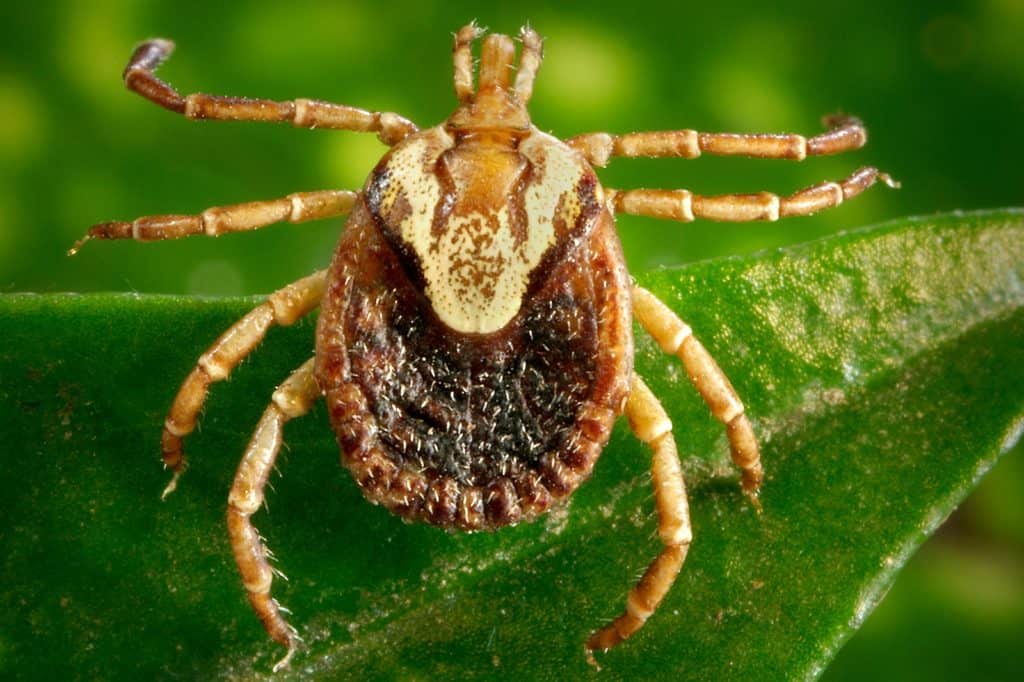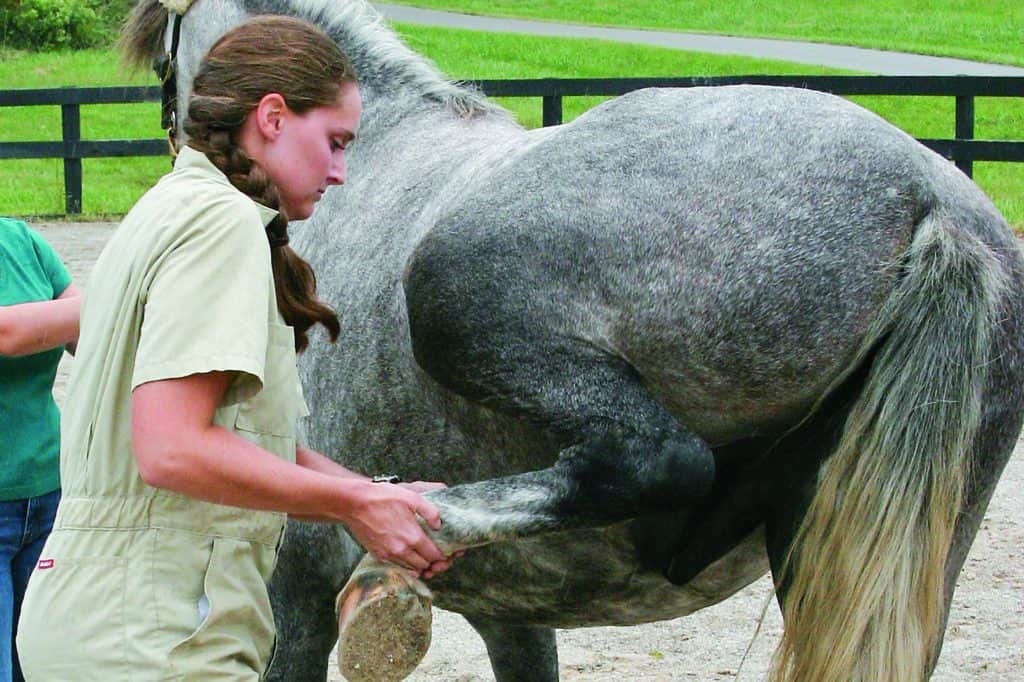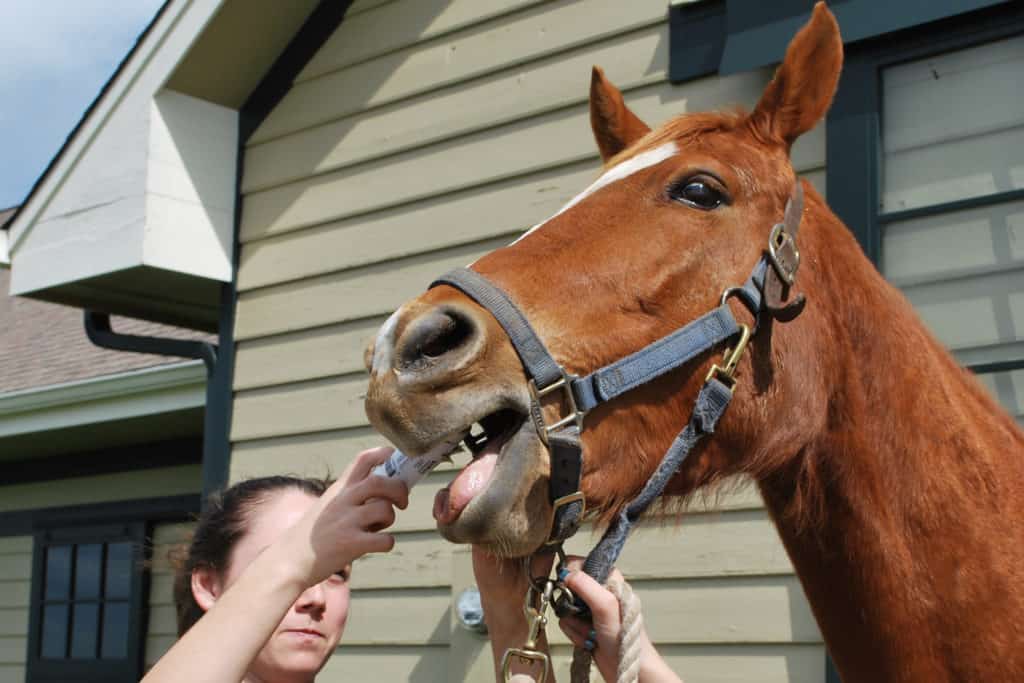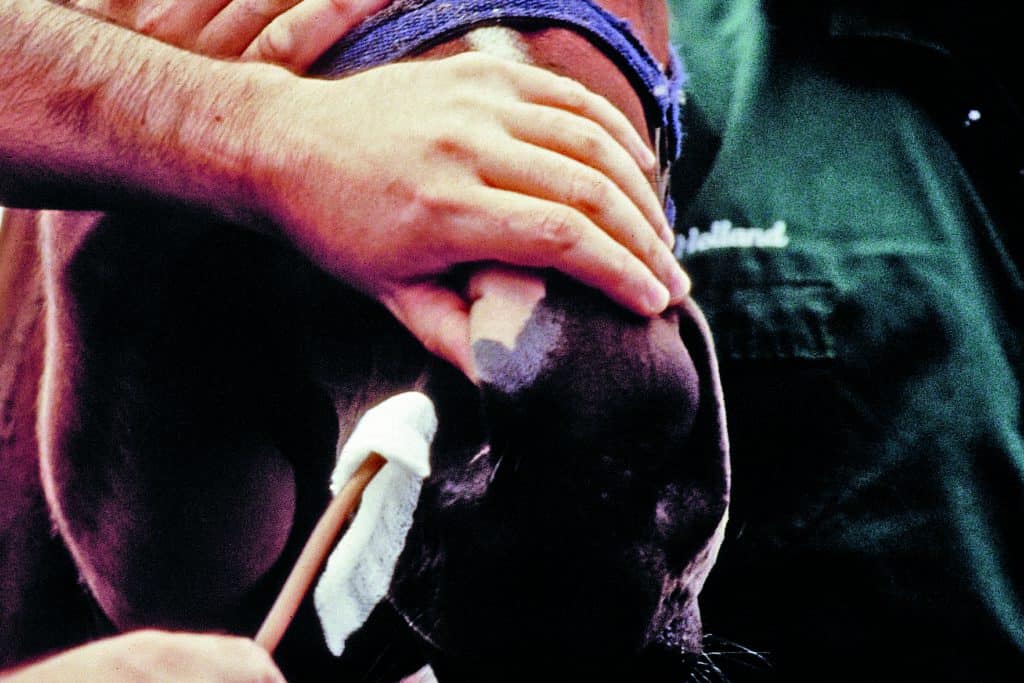
Lawsonia intracellularis (AAEP 2009)
Dr. Michele Frazer explains this condition and the prognosis for affected horses’ future sales and performance. (5:00)

Dr. Michele Frazer explains this condition and the prognosis for affected horses’ future sales and performance. (5:00)

(3:34)

Dr. Peter Timoney covers the basics of equine piroplasmosis.

Dr. Bred Bentz discusses some of the ways a vet discerns the root of lameness.

Sally Baker goes over the highlights of the 2009 Convention.

This hour-long video presentation features advice on identifying and managing resistant parasites.

This hour-long video features the most up-to-date information on managing anthelmintic-resistant ascarids, how to recognize the problem, what to do if you have resistant ascarids on your farm, and how to avoid developing resistant parasites.

Wobbler syndrome takes its name from its primary sign–a wobbling or uncoordinated gait. In technical terms, the horse has a “proprioceptiveness deficit,” or a lack of physical awareness of his limbs and their placement.
Get a behind-the-scenes look at award-winning photographer Barbara D. Livingston as she recounts the inspiration for her latest project, Horses: In Living Color. (2:19)

Penny Chenery, owner of Secretariat, sits down with BloodHorse.com’s Lenny Shulman to share her remembrances of Big Red and his legendary career.

This seminar covers trends and challenges in the racing, competitive non-racing, and recreational horse industries.

Rabies is a life-threatening neurological disease that can be spread from horses to humans. Once horses show clinical signs of rabies, death generally occurs in two to four days. Learn how to protect your horse and yourself.

Recent EHV-1 outbreaks have been alarming in their high neurological attack rate in both vaccinated and unvaccinated horses. Therapeutic intervention with antiviral nucleoside analogs may limit the spread of the virus during an active EHV-1 outbreak while protecting infected horses from the crippling effects of severe neurological disease.

Roly Owers of World Horse Welfare discusses their international projects.

Fionnan Nestor of Failte Ireland gives tips on booking an equestrian trip to Ireland.

It’s been 10 years since West Nile virus was introduced into the United States, and thousands of horses have been ill or died due to this disease. Find out how to protect your horses from this deadly disease.
Stay on top of the most recent Horse Health news with
"*" indicates required fields